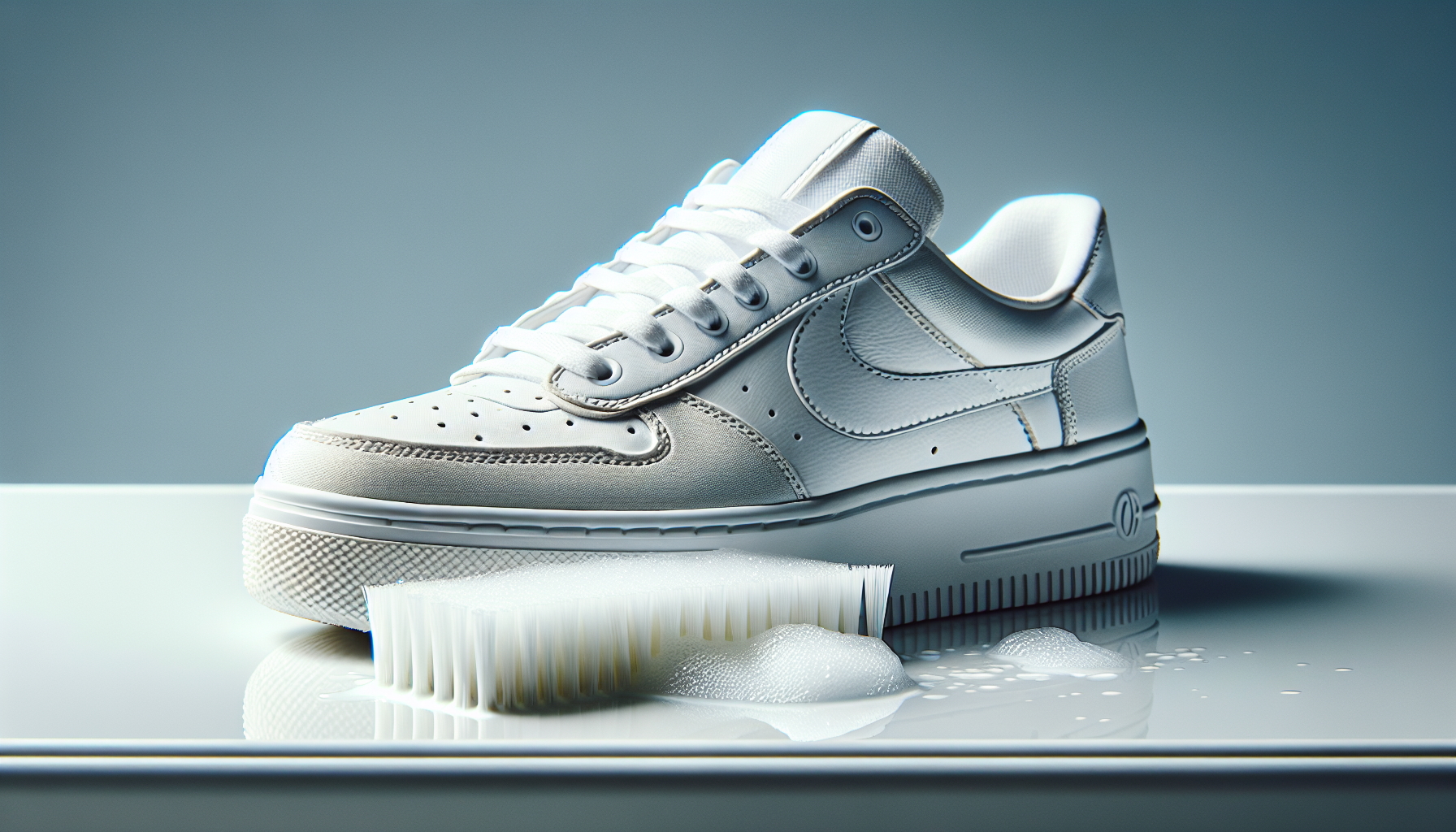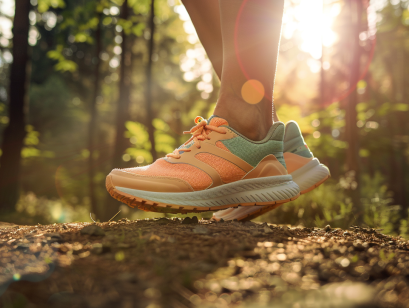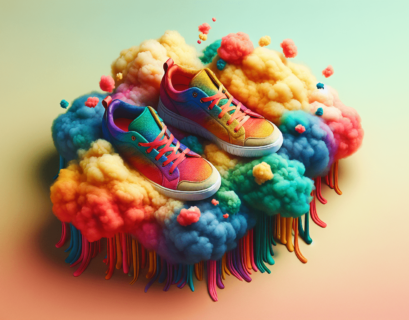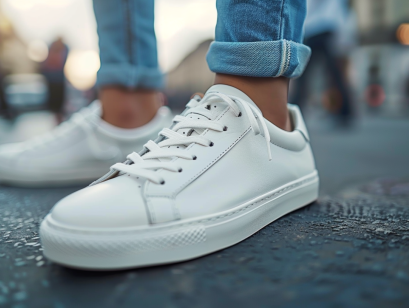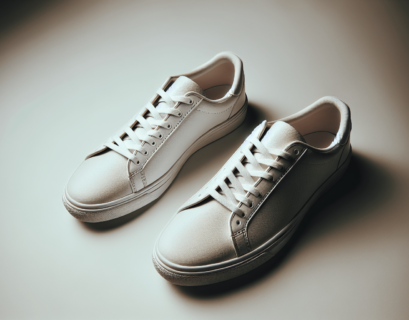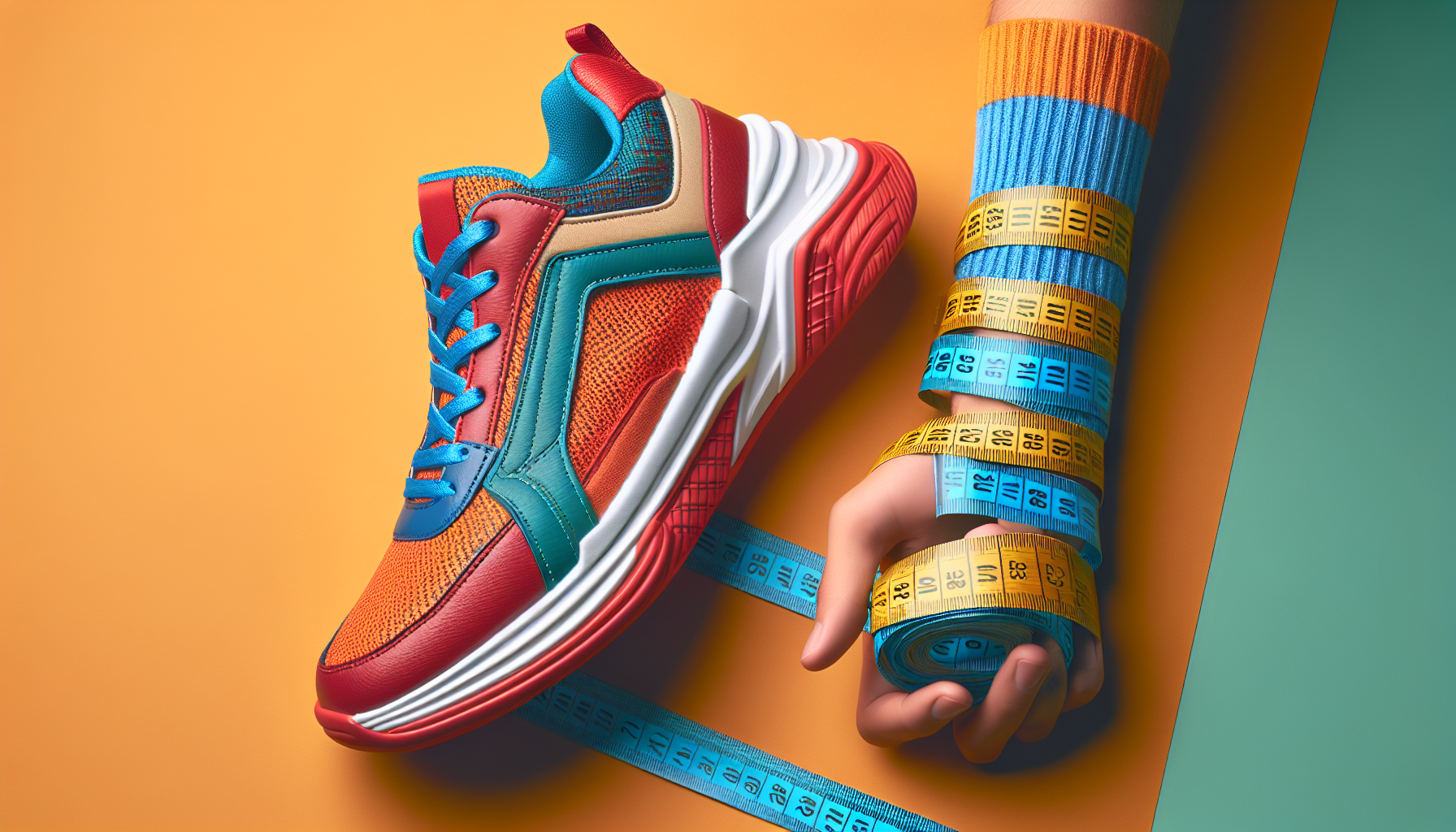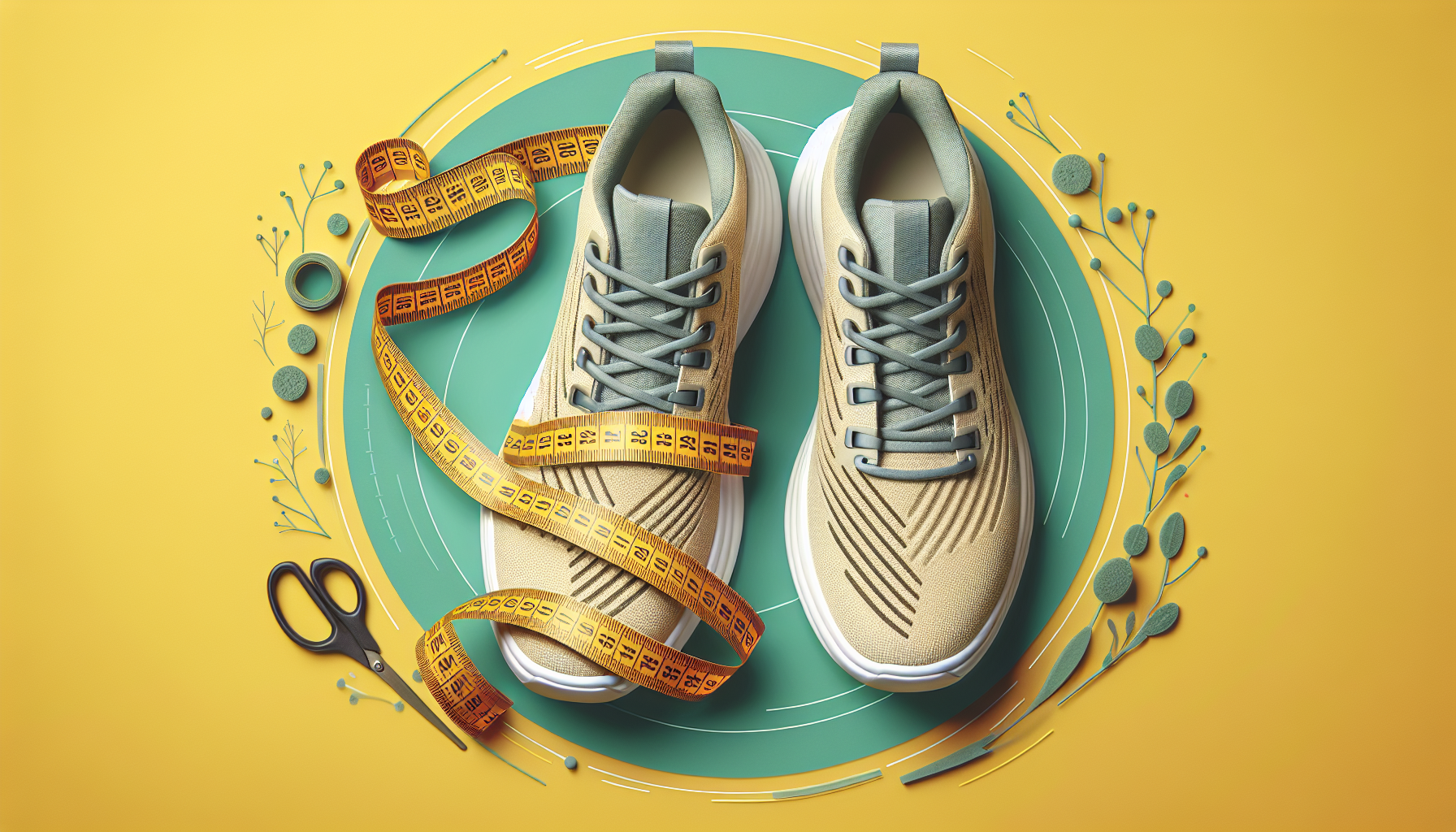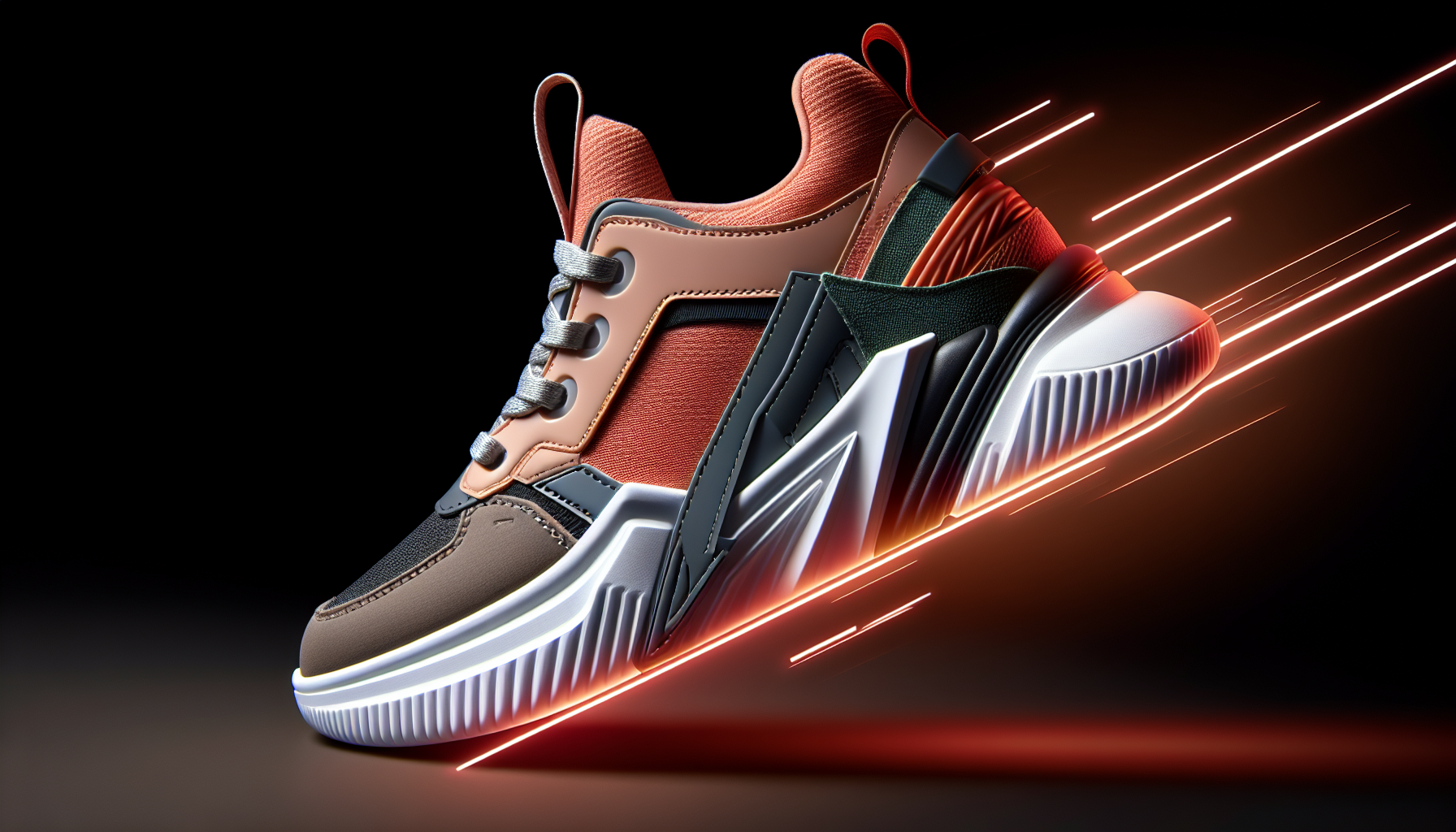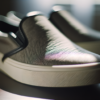So you’ve got a fabulous pair of sneakers that you absolutely adore, but they’re starting to lose their sparkle. Don’t worry, because in this article, you’ll discover the best ways to keep your sneakers looking fresh and clean. From removing stubborn stains to preventing dirt buildup, we’ve got you covered with simple and effective tips that will have your sneakers looking as good as new in no time. Say goodbye to grime and hello to sneakers that always make a lasting impression.
Understanding Different Sneaker Materials
Sneakers come in a wide range of materials, each with its own unique characteristics and care requirements. Understanding the different materials used in sneakers is crucial for determining the best cleaning techniques and ensuring the longevity of your beloved kicks.
Types of Sneaker Materials
Common sneaker materials include leather, suede, canvas, mesh, and synthetic materials such as nylon and polyester. Leather sneakers are known for their durability and versatility, but they require specific care to prevent cracking or discoloration. On the other hand, suede sneakers offer a luxurious feel but require delicate cleaning methods to avoid damaging the delicate nap.
Canvas sneakers are popular for their breathability and lightweight nature, making them perfect for casual wear. Mesh sneakers, incorporating breathable mesh fabric, are excellent for athletic activities as they provide ample ventilation. Lastly, synthetic materials like nylon and polyester are often used in performance sneakers as they offer durability and moisture-wicking properties.
Effect of Materials on Cleaning Techniques
Different sneaker materials require specific cleaning techniques to ensure their longevity. Using the wrong cleaning method can lead to irreversible damage and diminish the overall appearance of your sneakers. For example, cleaning leather sneakers with harsh chemicals can cause the leather to crack or lose its natural shine.
Suede sneakers, on the other hand, should never be exposed to water or abrasive cleaning tools, as they can ruin the delicate surface. Canvas sneakers, being less delicate, can withstand gentle scrubbing with mild soap and water. Mesh and synthetic materials generally hold up well to regular cleaning with mild cleansers.
Proper Care for Each Material Type
To properly care for your sneakers, it’s essential to understand how to clean and maintain each specific material. Leather sneakers can be wiped down with a soft cloth to remove dirt and dust, and a leather conditioner can help prevent drying and cracking. Suede sneakers require specialized suede brushes or erasers to gently remove stains and revive the fuzzy texture.
Canvas sneakers can be cleaned with a mixture of mild soap and warm water, using a soft brush to scrub away stains. Mesh and synthetic sneakers can tolerate a bit more vigorous cleaning, but should still be handled with care to prevent damage. It’s important to refer to the manufacturer’s instructions or do some research to determine the best care practices for your specific pair of sneakers.
Establishing a Regular Cleaning Routine
Now that you have a better understanding of the different sneaker materials, it’s time to establish a regular cleaning routine to keep your sneakers looking their best. By incorporating simple yet effective cleaning habits into your routine, you can extend the lifespan of your sneakers and ensure they always look fresh and clean.
Frequency of Cleaning
How often you should clean your sneakers depends on how frequently you wear them and the conditions they are exposed to. As a general rule, you should clean your sneakers at least once every two weeks to prevent dirt build-up and maintain their appearance. However, if you frequently engage in sports or activities that cause excessive sweating or exposure to dirt, you may need to clean them more frequently.
Storing Sneakers Properly
Properly storing your sneakers is equally as important as cleaning them. When not in use, make sure to store your sneakers in a cool, dry place away from direct sunlight. Avoid stuffing them with paper or other materials that could distort their shape. Instead, invest in shoe trees or sneaker inserts specifically designed to maintain their shape and minimize creasing.
Benefits of Regular Cleaning
Regularly cleaning your sneakers offers numerous benefits beyond just aesthetic appeal. By removing dirt, sweat, and other debris, you can prevent the breakdown of materials and the development of foul odors. Additionally, regular cleaning allows you to identify and address any minor damage or stains before they become more challenging to remove or potentially permanent.
Effective Sneaker Cleaning Solutions
When it comes to cleaning your sneakers, you have two main options: commercial cleaning products or homemade solutions. Each has its own advantages and disadvantages, but both can be effective depending on your preferences and the specific needs of your sneakers.
Commercial Cleaning Products
Many reputable brands offer specific cleaning products formulated to safely and effectively clean sneakers. These products are often designed to target stains and dirt while being gentle on the materials. Before purchasing a commercial cleaning product, make sure to check if it is suitable for the material of your sneakers.
When using commercial cleaners, it’s essential to follow the instructions carefully and test the product on a small, inconspicuous area before applying it to the entire shoe. Some cleaners come in a spray or foam form, while others may require dilution with water. Always ensure that the product is fully rinsed off after cleaning to prevent residue build-up.
Homemade Cleaning Solutions
If you prefer a more natural approach or want to avoid purchasing specialized cleaning products, you can create your own homemade cleaning solutions. One popular method is mixing mild dish soap or laundry detergent with warm water to create a gentle cleaning solution. Alternatively, you can use a mixture of equal parts white vinegar and water, which acts as a natural deodorizer and can help remove stains.
When using homemade solutions, it’s important to apply them sparingly and avoid saturating the sneakers. Excessive moisture can damage certain materials, such as leather and suede, so use a soft brush or cloth to gently work the solution into the stained areas. Thoroughly rinse off the cleaning solution and allow the sneakers to air dry completely.
Determining Best Solution for Your Sneakers
The choice between commercial cleaning products and homemade solutions ultimately depends on personal preference, the specific material of your sneakers, and the level of cleaning needed. It’s worth experimenting with both options to determine which works best for you. Remember to always consider the recommendations from the sneaker manufacturer and exercise caution to avoid any potential damage.
Step-by-Step Cleaning Method
Cleaning your sneakers should be a methodical process to ensure thorough and effective results. Follow these steps to clean your sneakers properly:
Dealing with Loose Dirt
Before wetting your sneakers, remove any loose dirt or debris by gently patting or brushing it off. Use a soft-bristle brush or a dry microfiber cloth to gently loosen and remove any visible dirt on the surface and in the crevices of the shoe. This step helps prevent the dirt from becoming ingrained in the material during the cleaning process.
Applying Cleaning Solution
Once the loose dirt has been removed, it’s time to apply the cleaning solution. Whether you’re using a commercial cleaner or a homemade solution, apply a small amount onto a soft brush or cloth. Work the cleaning solution into the stained or dirty areas of the sneakers using gentle circular motions. Take care not to scrub too aggressively, especially on delicate materials like suede and mesh.
Scrubbing and Rinsing Off
After applying the cleaning solution, scrub the sneakers gently with the brush or cloth. Pay particular attention to any stained areas or scuffs. If necessary, dip the brush or cloth into the cleaning solution again to work on persistent stains. Scrub until the dirt or stain starts to lift, but be careful not to oversaturate the sneakers.
Once you are satisfied with the cleaning, rinse off the cleaning solution thoroughly. Use a damp cloth or sponge to wipe away any remaining cleaning residue. It’s important to remove all traces of the cleaning solution to prevent any potential harm to the sneakers’ materials.
Drying Sneakers Correctly
After cleaning and rinsing your sneakers, it’s crucial to dry them properly to prevent damage and the growth of mold or bacteria. Avoid drying them directly under the sun or using excessive heat sources such as hairdryers, as these can cause the materials to warp or shrink.
Instead, stuff your sneakers with clean, dry towels or newspaper to help them retain their shape and absorb moisture. Allow them to air dry naturally in a well-ventilated area. This process may take several hours, but it ensures that your sneakers dry thoroughly without any adverse effects on their performance or appearance.
Dealing With Stubborn Stains
Despite your best efforts, your sneakers may occasionally encounter stubborn stains that are difficult to remove. Understanding the different types of stubborn stains and having appropriate cleaning products and techniques at your disposal can help you tackle these challenging marks effectively.
Types of Stubborn Stains
Stubborn stains on sneakers can vary greatly, but some of the most common ones include grass stains, oil or grease stains, ink stains, and scuff marks. Each type of stain requires a specific approach to remove it without causing further damage to the sneakers.
Grass stains, for example, often require a pre-treatment with a stain remover or a mixture of equal parts hydrogen peroxide and baking soda. Oil or grease stains can be treated with dish soap or a specialized degreaser. Ink stains are best addressed with rubbing alcohol or a stain remover specifically formulated for ink stains. Scuff marks can often be gently buffed away with a soft cloth or eraser.
Appropriate Cleaning Products for Stains
When dealing with stubborn stains, using the appropriate cleaning products is essential. Mild dish soap or laundry detergent can be effective for many types of stains, as they cut through grease and grime without being too harsh on the sneakers’ materials. For more stubborn stains, you may need to resort to specialized stain removers or even seek professional help.
Before using any cleaning product, always spot test it on a small, inconspicuous area of the sneakers. This helps ensure that the cleaning product doesn’t cause any discoloration or damage to the material. Follow the instructions provided by the manufacturer of the cleaning product and apply it sparingly to the stained area.
Gentle yet Effective Stain Removal Techniques
To remove stubborn stains, it’s essential to adopt a gentle yet persistent approach. Apply the cleaning product to a soft brush or cloth and work it into the stain in a circular motion. Avoid applying excessive pressure or scrubbing too vigorously, as this can wear down the material or push the stain deeper into the fibers.
For particularly tough stains, it may be necessary to repeat the process several times or allow the cleaning product to sit on the stain for a few minutes before scrubbing. Again, be sure to rinse off any residue thoroughly to prevent damage and discoloration. Patience and gentle determination are key when dealing with stubborn stains.
Maintaining White Sneakers
White sneakers offer a classic and versatile look, but they also require extra care and attention to keep them looking pristine. Here are some tips on how to maintain and clean your white sneakers effectively.
Understanding Challenges with White Sneakers
One of the main challenges with white sneakers is that they easily show dirt, stains, and discoloration. This means they require more frequent cleaning and care compared to sneakers in other colors. Additionally, the materials used in white sneakers can be more prone to yellowing over time, especially when exposed to sunlight or stored inappropriately.
Spot Cleaning Methods
Spot cleaning is an effective way to address small stains or areas of discoloration on white sneakers. Start by dampening a clean cloth or sponge with water or a mild cleaning solution. Gently blot the stained area, taking care not to spread the stain further. Be patient and repeat the process until the stain or discoloration is removed.
Preventing Yellowing of White Sneakers
To prevent yellowing, it’s important to take proactive measures in caring for your white sneakers. Avoid exposing them to direct sunlight for prolonged periods, as the UV rays can cause the materials to yellow. When storing your white sneakers, keep them in a cool, dry place away from heat sources that can accelerate discoloration.
Additionally, consider using sneaker protectors or sprays specifically designed for white sneakers. These products create a protective barrier that can minimize staining and discoloration. Regularly cleaning and maintaining your white sneakers will also help prevent the build-up of dirt and oils, which can contribute to yellowing.
Preserving Sneaker Shape
Maintaining the shape of your sneakers is essential for both their appearance and comfort. By following a few simple steps, you can ensure that your sneakers retain their original shape and fit for years to come.
Importance of Preserving Sneaker Shape
Over time, sneakers can lose their shape due to repetitive wear, improper storage, or exposure to extreme conditions. This can result in discomfort, wrinkling, and distortion of the shoe’s overall structure. By preserving the shape of your sneakers, you can maximize their lifespan and ensure they provide optimal support and comfort.
Use of Shoe Trees and Inserts
Shoe trees and sneaker inserts are indispensable tools for preserving sneaker shape. Shoe trees are typically made of wood or plastic and are designed to mimic the natural shape of the shoe. Inserting shoe trees into your sneakers when they are not in use helps maintain their shape and prevent creasing.
Sneaker inserts, on the other hand, are specifically designed to provide additional support and cushioning in certain areas of the shoe, such as the arch or heel. These inserts can help maintain the sneakers’ shape by reducing stress on specific areas during wear and absorbing shock.
Avoiding Common Sources of Shape Distortion
Beyond using shoe trees and inserts, there are other steps you can take to avoid common sources of shape distortion. Avoid wearing your sneakers for extended periods without allowing them time to rest and recover. This can lead to permanent deformation of the materials.
Additionally, be mindful of where you store your sneakers. Avoid stacking heavy objects on top of them or crushing them under other shoes, as this can cause the materials to lose their shape. Properly storing your sneakers, as mentioned earlier, is essential for maintaining their shape as well.
Care Tips for Athletic Sneakers
Athletic sneakers, designed for sports and physical activities, often require specific care to keep them performing at their best. To ensure your athletic sneakers stay in excellent condition, here are some essential care tips to follow.
Unique Aspects of Athletic Sneakers
Athletic sneakers are typically subjected to more intense physical activities, including running, jumping, and frequent sweating. As a result, they tend to accumulate more dirt, odors, and sweat than casual sneakers. They often feature advanced cushioning, support systems, and performance-enhancing technologies that require specific care to maintain their functionality.
Cleaning Tips for Sweat and Odor Management
Due to their exposure to sweat and physical exertion, addressing sweat and odors is crucial for maintaining your athletic sneakers. After each workout, remove any dirt or debris by brushing or wiping them with a soft cloth. If possible, remove the insoles and let them air dry separately.
To combat odors, sprinkle baking soda inside your sneakers or place odor-absorbing inserts. This helps neutralize unpleasant smells and absorbs excess moisture. Additionally, washing the insoles periodically can help remove built-up sweat and bacteria.
When cleaning the exterior of athletic sneakers, refer to the manufacturer’s instructions or follow the general cleaning methods mentioned earlier, depending on the specific material. Regularly cleaning and airing out your athletic sneakers after each use will prevent the accumulation of odor-causing bacteria and maintain their freshness.
Appropriate Storage for Athletic Sneakers
Proper storage is essential for maintaining the shape and performance of your athletic sneakers. When storing them, make sure they are dry and clean to prevent the growth of bacteria or mold. Avoid storing them in enclosed spaces that lack ventilation, as this can lead to trapped moisture and unpleasant odors.
Consider using shoe bags or breathable storage containers to protect your athletic sneakers from dust and dirt. This also helps to keep them organized and prevents damage or scuffing from other shoes or objects. Storing them in a dedicated sneaker rack or shelf ensures they are kept in an optimal position and minimizes the risk of distortion.
Repair and Restoration of Old/Damaged Sneakers
Even with the utmost care, sneakers may eventually require repair or restoration. Whether they have suffered wear and tear over time or sustained damage, knowing how to assess the situation and seek appropriate solutions is crucial for revitalizing your old or damaged sneakers.
Assessing Damage and Potential for Restoration
Before deciding whether to repair or restore your sneakers, assess the extent of the damage and consider the potential for restoration. Minor scuffs or stains can often be remedied with simple cleaning techniques or spot treatment. However, severe damage such as significant tears, sole separation, or irreparable stains may require professional intervention or deem the sneakers beyond repair.
Sourcing Professional Help
For more complex repairs or restoration projects, it is advisable to seek professional help. Professional sneaker repair shops or cobblers have the expertise and specialized tools to address a wide range of issues, including sole replacement, re-stitching, and color restoration.
When consulting a professional, be sure to communicate your specific needs and concerns clearly. Having a clear understanding of the cost and timeframe for the repair or restoration is also important before proceeding.
Do-It-Yourself Restoration Tips
If you’re feeling adventurous or possess some DIY skills, you may be able to tackle certain restoration tasks at home. Simple repairs such as reattaching loose soles using sneaker glue, restitching minor tears, or dyeing stained areas can be done with the right tools and materials. However, proceed with caution and always test any products on a small, inconspicuous area before applying them to the entire shoe.
Online resources and tutorials can provide guidance for specific restoration projects tailored to your sneakers’ needs. It’s important to make an informed decision based on the level of expertise required and your own comfort level with DIY repairs.
Sneaker Care Mistakes to Avoid
While it’s important to know the best ways to clean and care for your sneakers, it’s equally important to be aware of common sneaker care mistakes that can lead to damage or diminish their lifespan. By avoiding these mistakes, you can ensure that your sneakers stay in excellent condition for as long as possible.
Common Misconceptions About Sneaker Cleaning
One common misconception is that throwing sneakers in the washing machine is a quick and effective cleaning method. While it may work for some sneakers, it can cause damage to delicate materials, such as leather, suede, or sneakers with glued-on parts. Machine washing can also break down the shoe’s structure and compromise its overall durability.
Another mistake to avoid is using excessive cleaning products or harsh chemicals. This can strip off the shoe’s protective coatings, cause discoloration, or weaken the materials. Overusing water or saturating the sneakers can also lead to damage, especially for materials that do not handle moisture well.
Potential Damage from Improper Care
Improper care can result in a range of potential damage to your sneakers. Aggressive scrubbing or using abrasive materials can wear down the surface or cause color fading. Using cleaning products not intended for your specific sneaker material can lead to discoloration or drying out of the materials.
Additionally, failing to dry sneakers properly can cause mold growth, unpleasant odors, or deformation. Improper storage, such as stacking or squishing sneakers, can lead to permanent creasing or distortion of their shape. Understanding the materials and following the appropriate care methods can prevent these types of damage.
Correcting Care Mistakes
If you’ve made a mistake or used improper cleaning methods, all hope is not lost. Depending on the severity of the damage, there may still be some corrective actions you can take. For minor issues like residue from improper cleaning products, gentle rinsing with water can help remove the residue and mitigate potential damage.
For more significant problems, it’s best to consult with a professional sneaker repair shop or cobbler. They can provide expert advice or solutions for repairing or addressing the specific damage. Learning from your mistakes and being cautious with future care can help prevent further damage and maintain the appearance and longevity of your sneakers.
In conclusion, understanding the different sneaker materials, establishing a regular cleaning routine, using effective cleaning solutions, adopting a step-by-step cleaning method, and being aware of care mistakes to avoid are all vital in ensuring the longevity and overall appearance of your sneakers. By implementing these tips and techniques, you can confidently clean and care for your sneakers, keeping them in tip-top shape and enjoying them for years to come.

